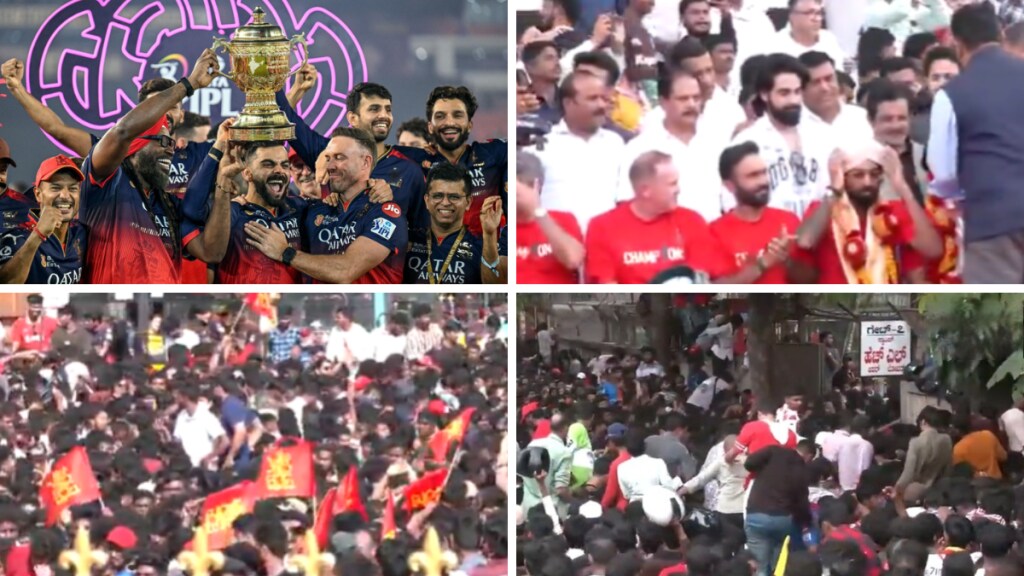In what should have been a moment of glory for the Royal Challengers Bengaluru (RCB), a catastrophic turn of events during the team’s IPL victory celebrations on June 4 led to the deaths of 11 people and injuries to over 50. Now, questions are being raised not just about crowd control and civic preparedness, but about the role of marketing leadership in orchestrating high-visibility events without adequate risk assessment.
At the centre of this scrutiny is Nikhil Sosale, the Head of Marketing and Revenue for RCB at Diageo India, who was arrested by Bengaluru Police on Friday while attempting to fly to Mumbai. His arrest, along with the detention of three staff members from the event management company DNA Entertainment Networks Pvt Ltd, raises critical issues about the accountability of brand custodians when experiential marketing goes wrong.
Did marketing misjudgment lead to the stampede?
FIRs in the investigation suggest that RCB’s victory parade, which culminated outside M. Chinnaswamy Stadium, was planned as a large-scale celebratory event. However, no official permission was granted by the team to organise the event. Despite that, the social media handles of RCB kept promoting the event all through the day, urging thousands of fans to come to Vidhan Soudha and Chinnaswamy Stadium to participate in the celebrations.
RCB is also being accused of mismanagement outside the stadium. Charges include, no robust crowd management or safety plan was in place—a serious oversight given the expected turnout after RCB’s long-awaited first IPL title win. “The stampede was not just an accident, it was the result of poor planning and a rushed execution. Unlike other cities that have hosted smooth victory parades, RCB’s celebration lacked basic safety measures. The event was reportedly organised in a hurry, without proper police coordination or crowd control. For a franchise with such a massive fan base, underestimating the crowd was a critical failure,” Dr. Ambi Parameswaran, Brand Coach, Brand Strategist and Founder of Brand-Building.com, told financialexpress.com. “Victory parades aren’t new, but this level of chaos is. While the blame game continues, RCB must take responsibility for the lapses that led to the tragedy, but they are not the only ones to be blamed. This clearly was a preventable disaster,” he added.
Marketing under scrutiny
Local media reports also suggest that RCB coerced the police and authorities into victory celebrations, as many international cricketers had to leave the country. Despite permission denials, the organisers went ahead with social media promotions inviting fans to the stadium.
There are unconfirmed reports suggesting that as fans waited to enter the stadium, a rumour that free tickets were being handed out drew hundreds to Gate no.7. This overwhelmed the gate, leading to the toppling of the barricades and triggering a stampede. For a team with one of the strongest fan followings in India, the lack of adequate logistical planning indicates a disconnect between marketing ambition and operational execution. Industry observers are now questioning whether the parade, while undoubtedly a powerful branding moment, was rushed without the required diligence typical of large-scale public events.
“It seems the idea of a victory parade came up only after RCB’s championship win, which meant the entire event was hastily put together without proper planning around crowd turnout, logistics, or coordination with authorities,” Ashok Lalla, an independent marketing and brand advisor, commented. “It may be premature to label this a marketing fiasco or assign blame to any one person. One can only hope this tragedy isn’t quickly forgotten—as is often the case in today’s short attention span media cycles,” he added.
Why was the marketing head arrested?
Nikhil Sosale was named in the FIR registered under multiple sections of the Bharatiya Nyaya Sanhita, including culpable homicide not amounting to murder and unlawful assembly. The FIR cites gross negligence in organising the event, failing to ensure public safety, and a lack of emergency preparedness.
As head of marketing and revenue, Sosale is believed to have played a key role in the planning, promotion, and execution of the celebration, working closely with both RCB’s internal teams and external vendors. His arrest signals a shift in accountability, where marketing decisions are not immune to legal scrutiny, particularly when they have direct implications on public welfare.
RCB’s celebratory event was, by all accounts, a brand activation, intended to capitalise on the team’s first IPL title with a memorable fan experience. But the tragic outcome underscores how experiential marketing cannot exist in a vacuum.
It must involve safety planning, government coordination, and ethical responsibility, especially in a market like India where crowd dynamics are unpredictable and infrastructure often strained. The aftermath also exposes how quickly brand reputation can flip.
Just hours after the stampede, RCB continued celebrations inside the stadium, drawing sharp criticism on social media.
Their official statement came several hours after the incident, further widening the perception gap between RCB’s fan-first branding and the on-ground empathy expected in such times of crisis. In the statement, the franchise expressed deep anguish, describing the tragedy as causing “a lot of anguish and pain to the RCB family.” As a mark of respect, they announced financial assistance of Rs 10 lakh to each of the eleven families of the deceased. RCB also committed to the creation of a support initiative named RCB Cares, aimed at helping fans who were injured in the incident. “Our fans will always remain at the heart of everything that we do,” the statement concluded.
Public event marketing demands more than creative execution—it requires coordination with legal, civic, and operational teams. Brand events, no matter how high-profile, must follow proper permissions and protocols. Most critically, crisis planning must be built in from the start, especially for large crowds. Crowd control, emergency exits, and safety measures are just as essential as the campaign idea itself. The arrest of a senior marketing executive sends a stark warning across the industry: when marketing strategy collides with public safety, the consequences are not just reputational; they can be criminal.


